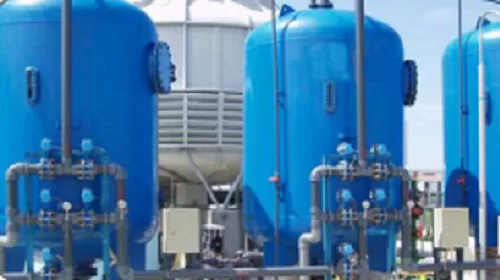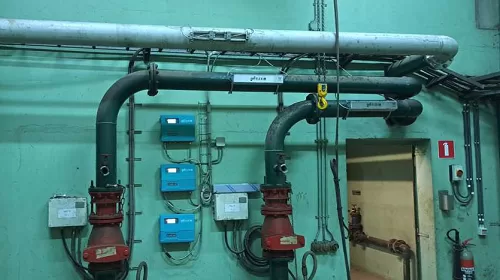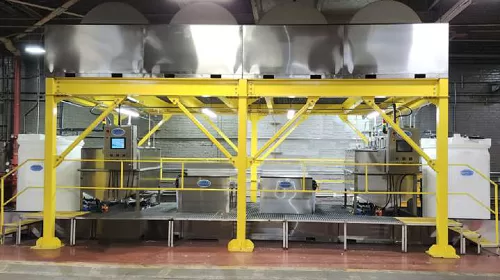Water… water… everywhere but there is no water for drinking! This is a popular sentence for us to understand that every water is not potable. Though plenty of water is available, all the water is not potable. Ground water and surface water are the two major water sources for drinking and other uses. Water may contain large numbers of contaminants which includes physical, chemical and microbiological. Physical contaminants include sand, silt, mud, etc. Chemical contaminants include inorganic chemicals like heavy metals, chlorides, sulphates, iron, nitrates, nitrites etc. and organic chemicals like pesticides, insecticides, amines, etc. Bacteria, virus and protozoans comes under microorganisms, in which pathogenic (disease causing) microorganisms are to be considered for treatment / removal.
In this case study, let us talk about physical contaminants in detail and their effective removal using various cartridges.
Physical contaminants are solid particles that are suspended in water and can affect its appearance, colour and clarity. They can be caused by natural sources like storms and erosion, or human activities like construction and land development, etc. Examples of physical contaminants include: sediments, dust, and other suspended solids.
The Safe Drinking Water Act defines the term “contaminant” as meaning any physical, chemical, biological, or radiological substance or matter in water. Therefore, the law defines “contaminant” very broadly as being anything other than water molecules. Drinking water may reasonably be expected to contain at least small amounts of some contaminants. Some drinking water contaminants may be harmful if consumed at certain levels in drinking water, while others may be harmless. The presence of contaminants does not necessarily indicate that the water poses a health risk.
Physical contaminants primarily impact the physical appearance or other physical properties of water. Examples of physical contaminants are sediment or organic material suspended in the water of lakes, rivers and streams from soil erosion.
Everyone wants to drink water that is contamination free. And yet, keeping drinking water clear of contamination can be difficult. In most cases, the presence of tiny amounts of foreign substances do not pose a health risk, but we should still pay attention to the content of our local drinking water.
Providing safe drinking water for all is a challenging task. Many different compounds and substances, both natural and man-made, find their way into the water supply, and it can be difficult to remove all traces of contaminants from the water. In this article, we dive into physical contaminants that can be found in drinking water.
The presence of contaminants is not necessarily a problem in itself. Many of the substances found in drinking water are harmless at low levels and some, like certain minerals such as calcium, magnesium, sodium, potassium, may even be beneficial. But in some cases, contaminated water can cause health problems or lead to waterborne diseases, if the level of harmful substances is beyond the drinking water guidelines. Drinking water can be affected by many different factors and most contamination can be reduced with water filtration.
Access to clean drinking water is a fundamental human right, yet many people across the world face the challenges of contaminated water. Lack of access to clean drinking water isn’t only a problem in developing countries; it’s also an issue in developed countries where the presence of tiny amounts of foreign substances in tap water can pose a potential health risk, highlighting the necessity of monitoring and ensuring water quality.
WHAT IS WATER FILTRATION, AND WHY IS IT IMPORTANT?
Water filtration is a crucial process that ensures the purity of drinking water by reducing harmful contaminants. It is an essential safeguard against a wide array of pollutants that can compromise the quality of water, making it unsafe or unpleasant to consume. The water filtration process involves passing water through filters, such as sediment filter, carbon filter and disinfection by ultraviolet, ultrafiltration, nano filtration or reverse osmosis. Few reasons why water filtration is essential for everyone is given below:
Health protection: The primary importance of water filtration lies in its ability to protect public health. Contaminated water can carry many harmful pathogens, which may lead to severe illnesses and outbreaks of waterborne diseases. By filtering these biological contaminants, water filtration systems will help in preventing water borne diseases such as cholera, dysentery and giardiasis. Ultra, nano & reverse Osmosis membranes are used for removal of pathogenic microorganisms.
Aesthetic improvement: Physical contaminants such as sand, silt, mud and organic matter can affect the taste, smell, and appearance of water. While these contaminants may not always pose a direct health risk, they can make water unpalatable and unpleasant to drink. Filtration systems reduce these impurities, improving the overall sensory qualities of water and making it more palatable to drink. For the removal of physical impurities, various types of cartridges are used which includes PP Yarn wound cartridge, PP meltblown cartridge or thermobond cartridges. For removal of chlorine, chlorination by-products, organic chemicals, bad odour, bad smell, etc. activated carbon filters (Granular carbon or carbon blocks) are used. Photos are provided in this article.
Environmental impact: Human activities, including agriculture, industrial processes and improper waste disposal, contribute significantly to water pollution. Filtration systems help mitigate the environmental impact by reducing pollutants from water sources, thus protecting ecosystems and maintaining the balance of natural water bodies.
Removal of suspended particles from various types of water like ground water, surface water, industrial wastewater, sewage water, etc. are of great importance. Filtration and removal of sediments / suspended particles is the first and foremost important step in water treatment.
For drinking water treatment of various capacities, various treatment methods are used. For biggest capacity water treatment, people use sand filters, glass beads filters, etc. as pre-treatment. For domestic and commercial plants people use Polypropylene (PP) yarn wound cartridges of various sizes, PP meltbolwn and polyester thermobond cartridges. Each of these cartridges have their own merits and demerits. Reverse Osmosis plants of capacity 1000 Litres per hour use micron filters to .protect RO membrane. Usually, people use meltblown or PP yarn wound cartridges of 1 to 5 microns. For better life and more dust holding capacity, one can rely on yarn wound cartridge. In any water treatment system, it is important to select sediment removal system based on the type of sediments and quantity of water to be treated. Similarly Activated carbon filter/cartridge is required to be present in any water purification system.
In any water treatment system, it is important to select sediment removal system based on the type of sediments and quantity of water to be treated. Similarly Activated carbon filter/cartridge is required to be present in any water purification system.





